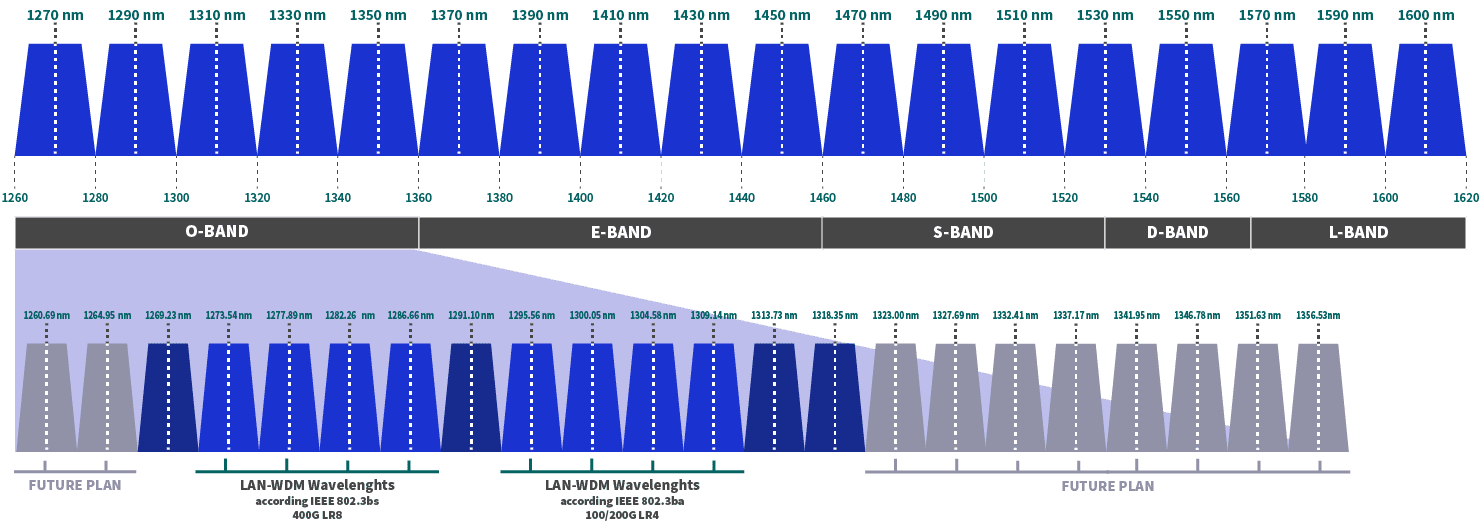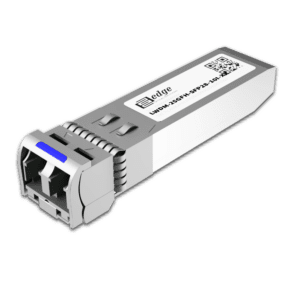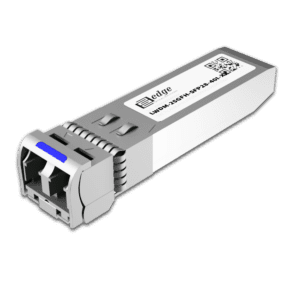5G
Compatible LWDM eCPRI
| Home | / |
Products | / |
LWDM eCPRI |
|---|
5G Mobile Networks use much higher radio frequency bands, Massive MIMO and Beamforming technologies which require bringing Remote Radio Unit (RRU) closer to the end users and therefore much denser RRU distribution. Centralized Radio Access Networks (CRAN) are favored by many Mobile Network Architects, where remote BBU farms are built in centralized equipment rooms from where services are provided to many RRUs. Such approach fastens the 5G roll-out, reduces space requirements and rental costs in remote sites, improves maintenance and significantly simplifies transport network architecture.
LAN WDM (Local Area Network Wavelength Division Multiplexing) is a new promising way for 5G Fronthaul network design to interconnect BBUs to RRUs. LAN WDM use Wavelength Grid with 800 GHz (approximately 4.4 nm) channel spacing and has 12 Wavelengths from whom 4 center wavelength are according to newly released 400G LR8 (IEEE 802.3bs) standard, 4 center wavelengths are used in 100G LR4/ER4, 200G LR4, 400G LR8 (IEEE 802.3ba) standard and 4 center wavelength are not yet standardized.

If we look at the WDM Fronthaul, LWDM eCPRI has some potential advantages when compared to CWDM eCPRI and DWDM eCPRI. As LWDM is in the O band optical wavelength range it helps to have low dispersion penalty when compared to CWDM eCPRI 5G Fronthaul approach which leads to less expensive laser/receiver components, however as LWDM has narrow channel plan, therefore modules are very sensitive to the temperature shifts (similar as DWDM modules) and require TEC (Thermo-Electric Cooler) Controller which increase the cost. LWDM eCPRI potential advantage when compared with DWDM eCPRI could be the ability in similar Fronthaul scenarios to use DML lasers instead of more expensive EML lasers, but this potential advantage will depend on industries maturity for DML chips in LAN WDM spectrum.
One of most the important advantages for LWDM eCPRI when compared to CWDM or DWDM eCPRI in mobile Fronthaul could be the ability to build scenarios where we have LAN WDM 100G/200G/400G modules in the BBU unit and 25G LAN WDM at the RRU side. Let’s look at such a scenario if we have 100G in BBU and 4x25G in RRU. LAN WDM 100G module has 1295.56, 1300.05, 1304.58, 1309.14nm wavelength and on each wavelength we have 25G signal and then at the RRU side we would use passive LAN WDM filter to split the 100G signal in 4x25G, we would use 25G LWDM eCPRI modules and connect them to RRU and would be able to provide 25G for particular sector in case we have 4 sector base station. Such an approach would simplify the network structure, make the installation process much smoother and drive down the total cost. LWDM eCPRI 25G modules support latest 5G Fronthaul bit rate requirements and such applications as CPRI Option 10 (24.33 Gbps), CPRI Option 9 (12.165 Gbps), CPRI Option 8 (10.138 Gbps) and CPRI option 7 (9.830 Gbps) at the same time our LWDM CPRI 25G SFP28 optical transceivers are backwards compatible with older generation 4G/3G Mobile Base Stations.
Typical LWDM eCPRI 25G SFP28 deployment scenarios are:
- LWDM 25GE LR (Long Range) eCPRI / CPRI, applications up to 10km over OS2 fiber
- LWDM 25GE LR 20km (Long Range) eCPRI / CPRI, applications up to 20km over OS2 fiber
- LWDM 25GE ER (Extended Range) eCPRI / CPRI, applications up to 40km over OS2 fiber
LWDM 25G SFP28 eCPRI Tansceivers:



